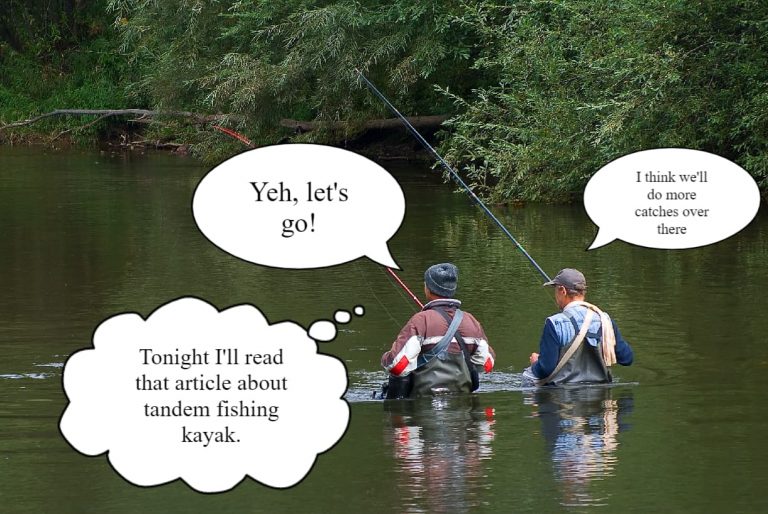How to Start Kayak: The Ultimate Beginners’ Guide
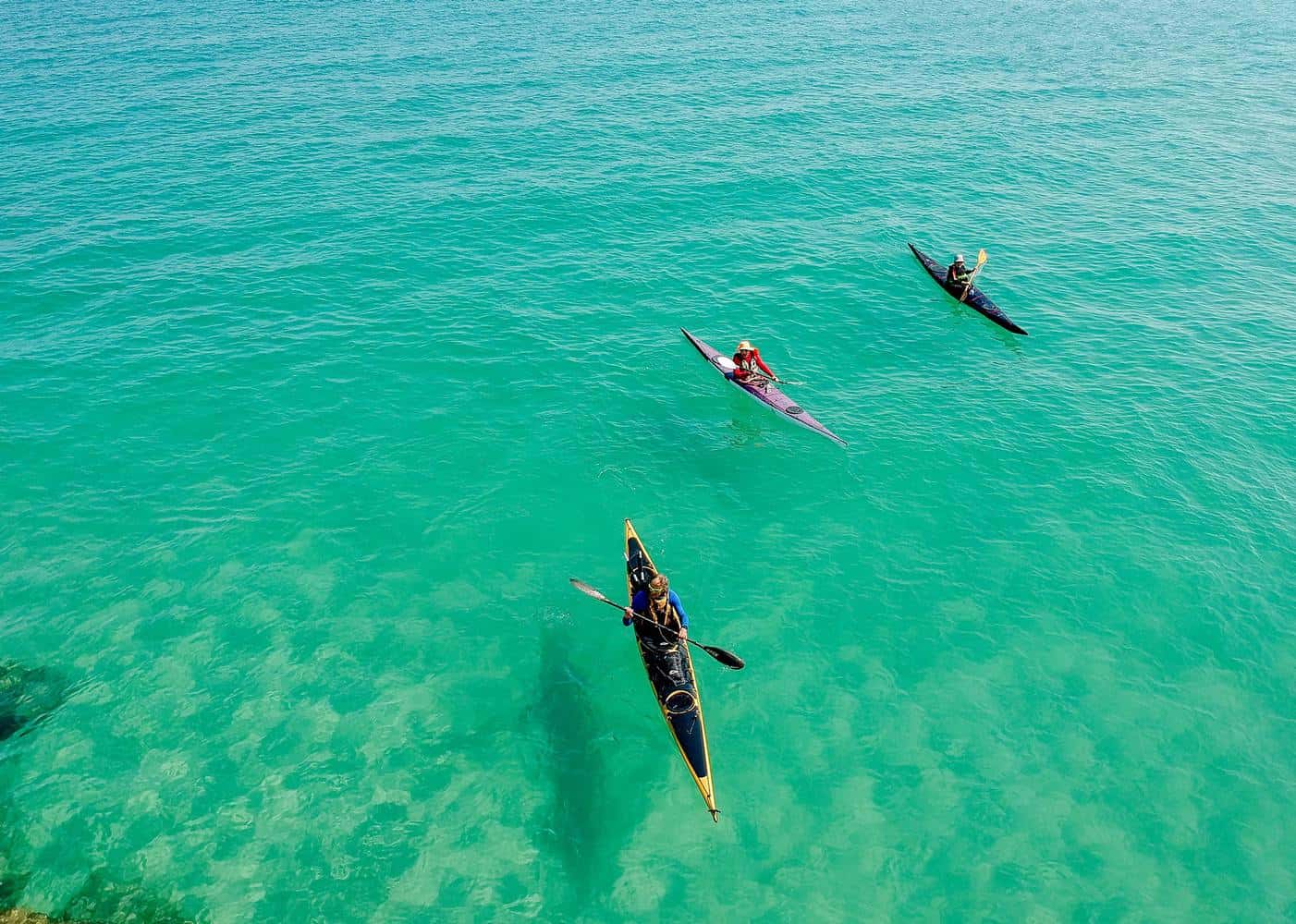
Share this article:
TopNotch Outdoor is independent – we research, test, and rate the top products to help you make the right buying choice. We sometimes use affiliate links and may receive a small commission on your purchase. Learn more…
There’s nothing quite like taking to the waters with your trusted kayak and drifting across the big blue by your lonesome. Not only is kayaking for beginners a great physical activity to strengthen your mind and body, but it’s also a brilliant method of exercising your inner adventurous spirit.
For me, kayaking has always been a great source of enjoying my alone time while simultaneously helping me burn some much-needed calories. It worked on two levels as an excellent stress buster and a brilliant fitness regime.
If you’re new to kayaking, or you’re considering taking up kayaking during the summer months, we offer a complete breakdown of all the information you’ll need to take on kayaking for beginners.
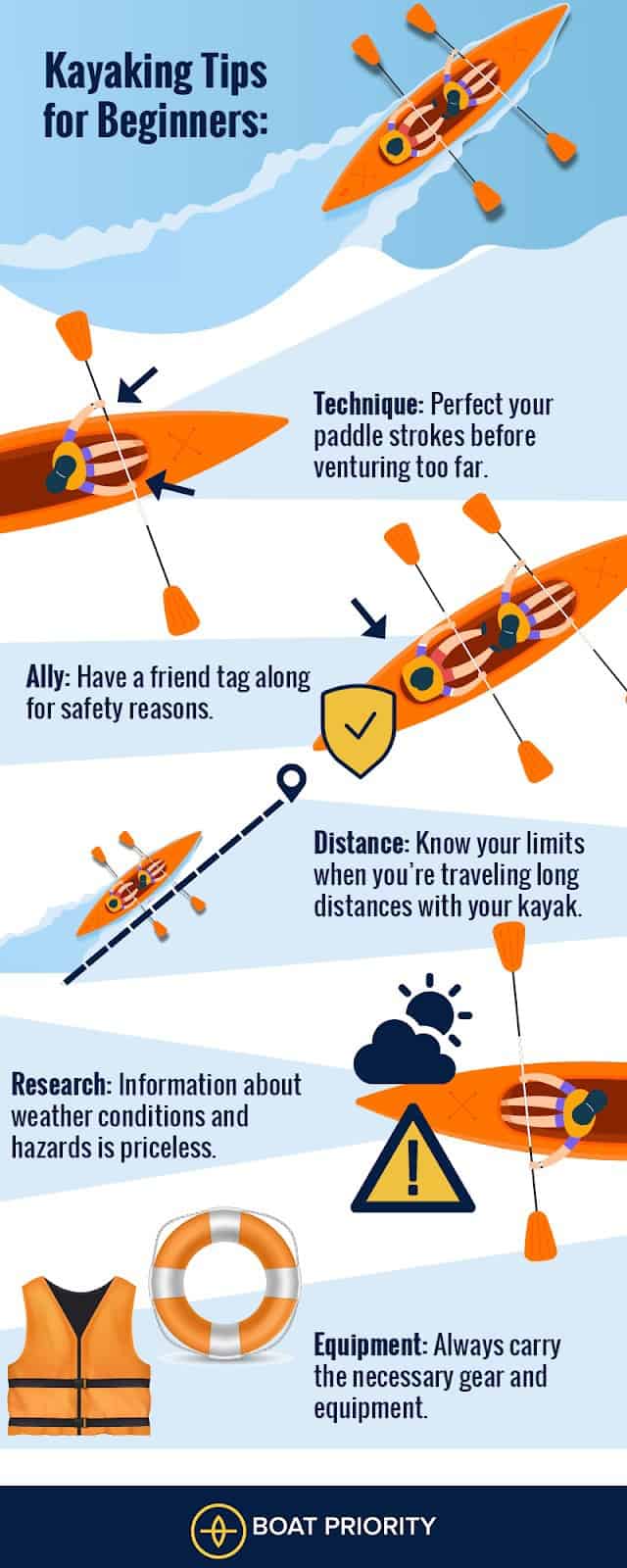
How to Start Kayak
If you’ve never tried kayaking before or if you’ve just had the idea to start, there’s no doubt that you’ll need a kayak to get going with this activity. You can always pick up a kayak if you’re sure you want to pursue kayaking on a long-term basis.
However, if you’re unsure and you want to experiment a few times before making up your mind, you have a handful of options to do exactly that.
Borrow a Kayak
If you know someone who’s taken to kayaking like a fish to water, you can always use their expertise not just to understand the activity a bit better but also to borrow their kayak for a few initial runs. You can test your love for the activity in real-time this way before committing to it.
Rent a Kayak
Kayaking for beginners is relatively easy to take up, as this is a popular activity across the world. If there’s a body of water near you, the chances are that you have a kayaking shack or center as well. You can use this location to rent a kayak for a few turns and ensure that this is something you want to take on in the long run.
If you’re only slightly interested in the activity, you can always look to rent a kayak each time instead of purchasing your very own boat.
Take a Kayak Tour/Class
When you take a kayaking tour, you can utilize the knowledge of an expert to better understand the activity and ensure that you have all the information you need to take on kayaking on your own terms.
During these tours or classes, you’ll be given a kayak, some gear, and a basic understanding of the safety measures you’ll need to remember while trying to kayak on your own.
Essential Kayak Gear
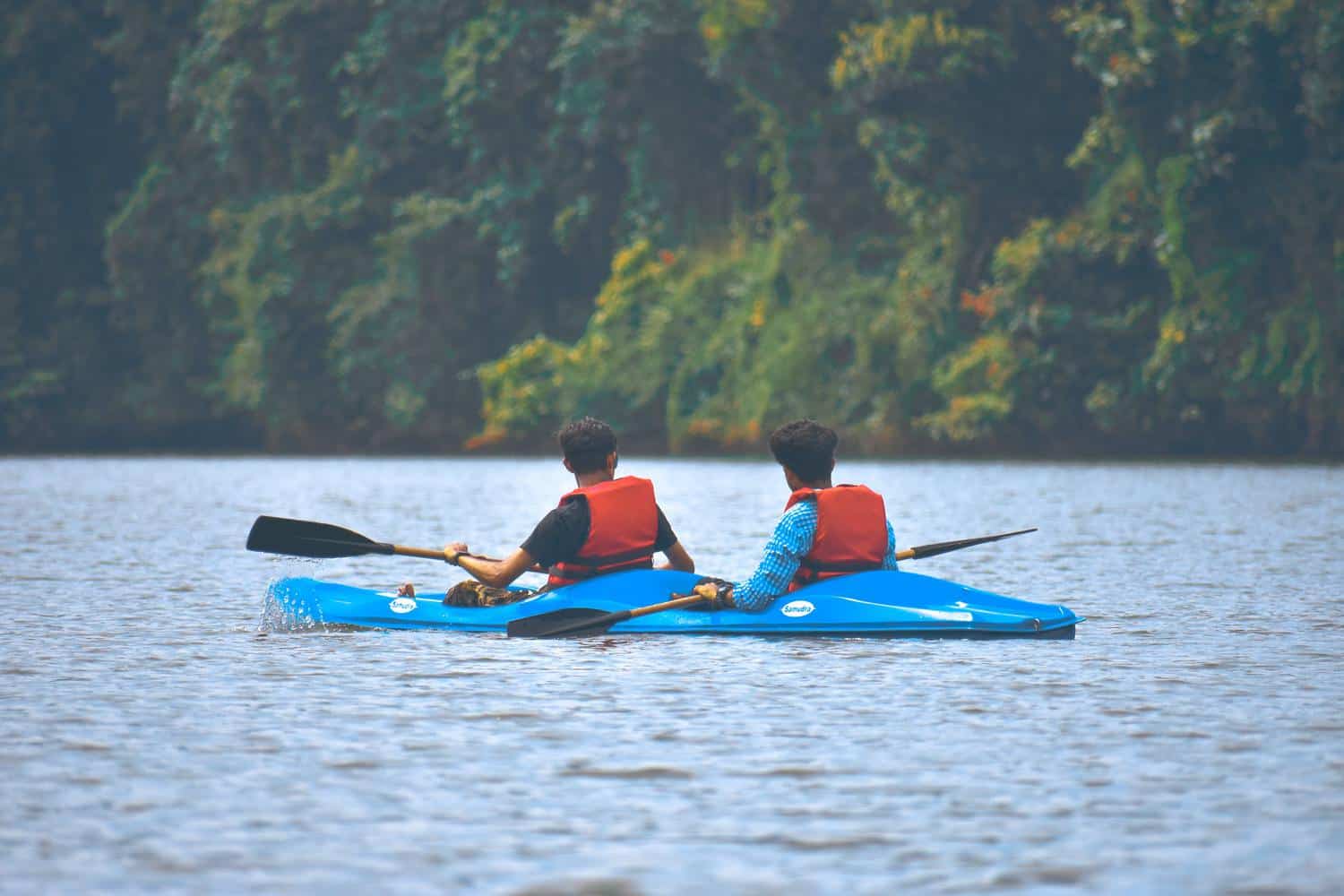
We’re now assuming that you’ve taken your time to get used to kayaking, and you’ve gotten to a point where you’ve either purchased your own kayak or you have access to a kayak on a regular basis.
At this stage, you’ll need to consider purchasing or renting out essential gear and clothing in order to remain safe in the water.
The following is a list of kayaking gear that you should definitely carry when you take up kayaking for beginners:
- A personal flotation device (PFD) that fits you perfectly and has been approved by coastguards.
- A paddle that’s proportionate to your body size.
- Eventually a leash for your paddle not to loose it and always worried about it.
- A bilge pump (to remove unwanted water from any open boat) – didn’t know their existence till I saw one.
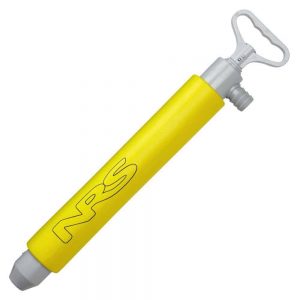
- A spray skirt (if you’re hitting the waters during turbulent times).
You cannot learn how to start kayak without these essentials by your side. Apart from the accessories, you’ll need to carry with you, it’s also vital to have the appropriate clothing with you during this activity as well. The most important kayaking clothes you’ll need to have access to include:
- A non-binding and non-cotton set of swimwear or shorts.
- A rashguard top (non-cotton variant) with either short or long sleeves.
- Sun-shielding hat (during sunny or hot days).
- Neoprene footwear.
- A vest or fleece jacket that’s lightweight (based on the weather).
- Rain jacket or spray jacket (based on the weather).
- A wetsuit (if you’re heading into waters colder than 60 degrees Fahrenheit).
- why not kayak cooler for picnics
You will also need to consider carrying a set of personal items for various safety and health reasons when you’re taking on kayaking for beginners:
- Water: Carry plenty of water to stay hydrated during your travels. Kayaking can be a taxing activity, and you’ll need lots of water to stay fresh and hydrated.
- Snacks: If you’re planning on spending multiple hours in the water, it’s best to carry some snacks with you to keep your energy levels up. Look for snacks that boost your energy without making you feel too full (like fruit or power bars).
- Sun protection: You will be exposed to the full brunt of the sun when you’re in the open waters, especially during the summer season. Make sure to carry sunscreen, lip balm, and sunshades to tackle this element.
- First aid kit: Kayaking by yourself can be a deeply liberating activity, but it can also be perilous at times. Make sure to keep a first aid kit handy to protect yourself and tend to your injuries.
- Signaling whistle: In the off chance that you do get stranded in the waters by your lonesome, it can be invaluable to have a signaling whistle to alert passing vessels of your presence.
- A watch: It’s vital to keep track of the time when you’re kayaking, as hours can fly by during this highly pleasurable activity. You don’t want to still be out in the water when the sun goes down, so having a watch can help you keep track of time for safety reasons.
- Head torch: In case you do end up staying out in the waters past sundown (unintentionally or otherwise), you better have a head torch handy to make navigation a lot easier in the darkness or twilight.
- A spare bag: When you’re in the water, things are bound to get wet, and that’s near unavoidable! It pays to have a spare bag handy in case you want to stow away some of your essentials or even put away your wet clothes.
Parts of a Kayak
From this point onwards, we will begin to use some technical terms related to the parts and positions of the kayak that are worth knowing when you’re learning how to start kayaking. We provide a breakdown of these important terms in the section below, as they’re vital for kayaking for beginners:
- Bow: This is the front of the boat and points towards the direction you’re traveling.
- Stern: The backside of the boat that’s pointing the direction you came from.
- Port: The left side of the boat.
- Starboard: The right side of the boat.
- Deck: The topside of the boat.
- Hull: The bottom of the boat.
- Cockpit: The part where you enter the boat and seat yourself.
- Seat: Your base of operations within the cockpit.
- Hatch: The area that allows you to access the inner cargo of your kayak.
- Carry handles: The parts that allow you to easily grip and carry the boat.
Starting Kayaking for Beginners
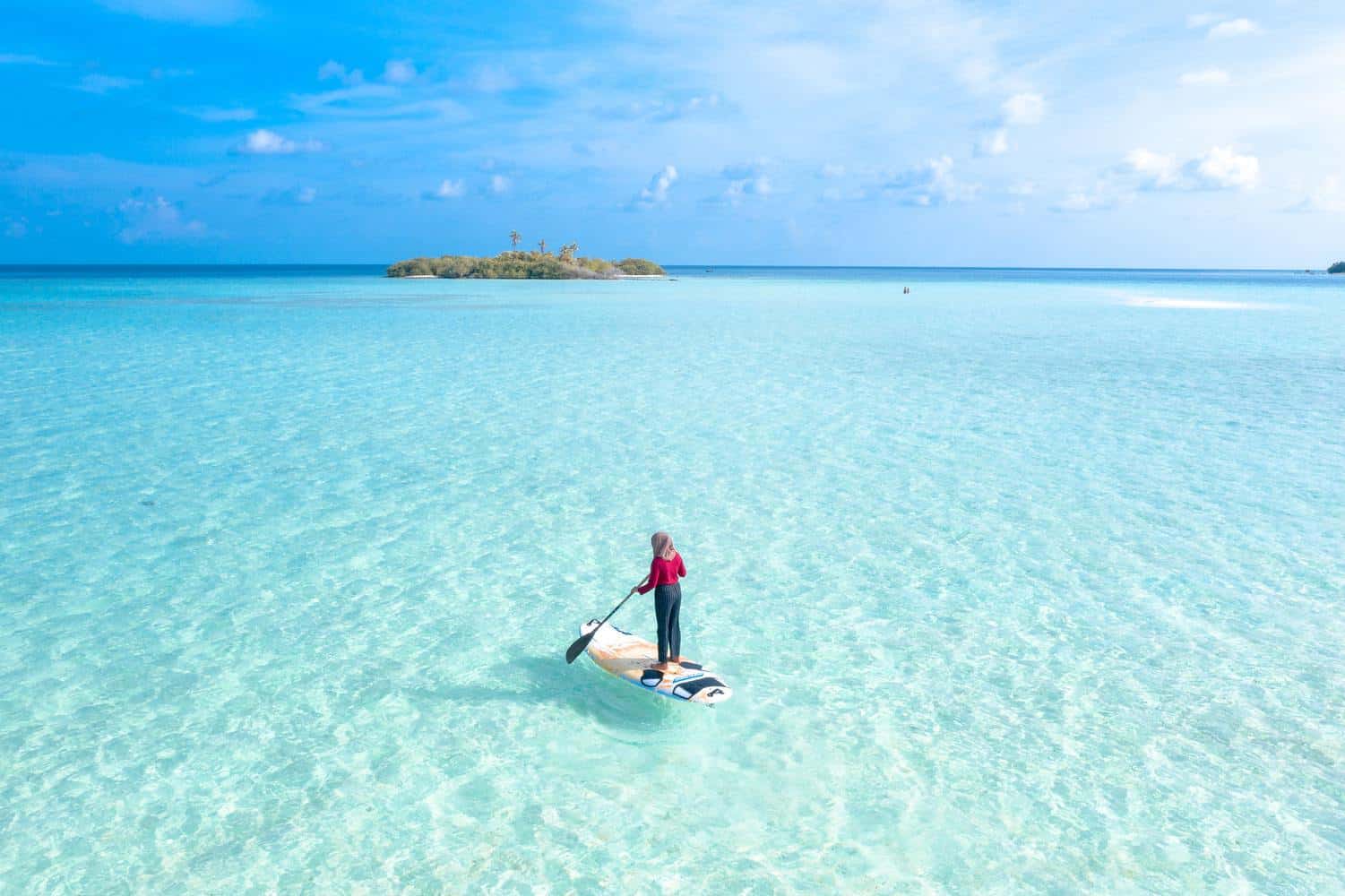
We now get into the basics of kayaking and discuss the introductory techniques you’ll need to learn to begin kayaking for the first time. You cannot learn how to start kayaking without these crucial pointers below.
Adjusting Your Kayak
One of the most important aspects of kayaking is to adjust the position of your body before taking to the water. It’s crucial that you spend some time becoming comfortable in the boat and find the ideal position before you actually go anywhere.
Here’s a list of important pointers for you to remember while you look to adjust your position in the kayak.
Posterior Position
Ensure that your posterior position is comfortable, and you have achieved an ideal position inside the kayak while sitting down. If you want to remain comfortable while using the kayak, you can fine-tune the angle of your seat back and find the position that best suits you.
If you’re looking for greater balance and power while kayaking, though, you should look to sit more upright and find the right position to get some good strokes going.
Foot Position
You should look to place the ball of your feet on the footpegs available inside the kayak, and try to obtain a slight bend in your knees. This is the perfect foot position to achieve when you’re seated in a kayak.
You should adjust the footpegs by tilting them and sliding them along the track of the stopping points until you have the ideal position. It might get tricky to shift the pegs while you’re still seated in the boat, so it’s probably best to get out of the boat to make these adjustments.
Cockpit Positioning
For safety reasons, you need to ensure that your bent knees are touching their respective sides of the cockpit. With this position, you will be able to control the side-to-side motion of the boat while you’re paddling.
At this juncture, ensure that the fit is snug without it being too tight. You should be able to easily escape the boat in case you capsize in the waters.
Launching Your Kayak
Now that you’re firmly and comfortably seated in the kayak, it’s time to launch your vessel into the water and get your adventure underway. Here are some vital tips for you to remember as you prepare to slide into your favorite body of water.
Use Help
It can be challenging to carry your kayak by yourself to the water, so have a friend handy to help you transport your boat, and to help you during the time of launching.
After you carry the boat close to the water, place the boat perpendicular to the shoreline with the bow facing away from the shore and the stern sticking close to the shore.
Position Yourself Well
Make sure to put one of your paddles under the portion of the deck line that’s in front of your cockpit. Now, you should stand over the kayak while straddling the cockpit. You can now begin to enter the cockpit by sitting your butt down in the seat and lifting your legs to let them slide into the cockpit.
Make sure to remember the adjustment methods we discussed previously to position your butt, back, and legs perfectly in the kayak at this point.
Time to Move
You can now begin to move your kayak into the water by using your paddle to move the incoming waves. You can attach your spray skirt to keep your gear protected and successfully enter calm waters.
Exiting the Kayak
When you’re done using your kayak, and you want to exit the boat, you need to simply paddle back to the shore and achieve your launch position again. Now you can set up your outrigger and reverse the steps from this section until you’re back to straddling your kayak again.
Holding Your Kayak Paddle
One of the first rules of kayaking for beginners is that your paddle is your best friend and your sole ally as you try to navigate your boat through the water. While using a paddle may seem instinctive, there are a few pointers you must remember when it comes to holding your kayak paddle.
- Grasp the paddle using both your hands and center the paddle shift on top of your head. The proper position is attained with your elbows at a 90-degree angle while holding the paddle.
- You can now use the paddle once you hit the right position. Make sure that the blades of the paddle are in line with one another. If you notice that the blades are offset, you should adjust the blades back in position by twisting the center of the shaft.
- Some paddles also have a push-button that you can use to adjust the blades back in position as well. If you have a paddle that’s feathered, you should know that they can be trickier to use for beginners, but they are much more competent when it comes to moving through the wind.
- Keep a check on the position of the paddles as you move through the water. Ensure that the longer edges of the blade are always on top to make stroking easier.
- Ensure that the scooped side of your paddle blades are facing towards you. It may be hard to find the scooped side because the curvature of the blade is subtle, but look closely to ensure the right position.
- Keep your knuckles on the paddle shaft and ensure that they align with the top of the blades.
- Keep a relaxed grip while utilizing the paddles. First, make an “O” grip using just your index finger and thumb on the paddle, and then allow the rest of your fingers to rest gently on the shaft of the paddle. Gripping the paddle tightly isn’t necessary, and it can end up tiring you out quickly.
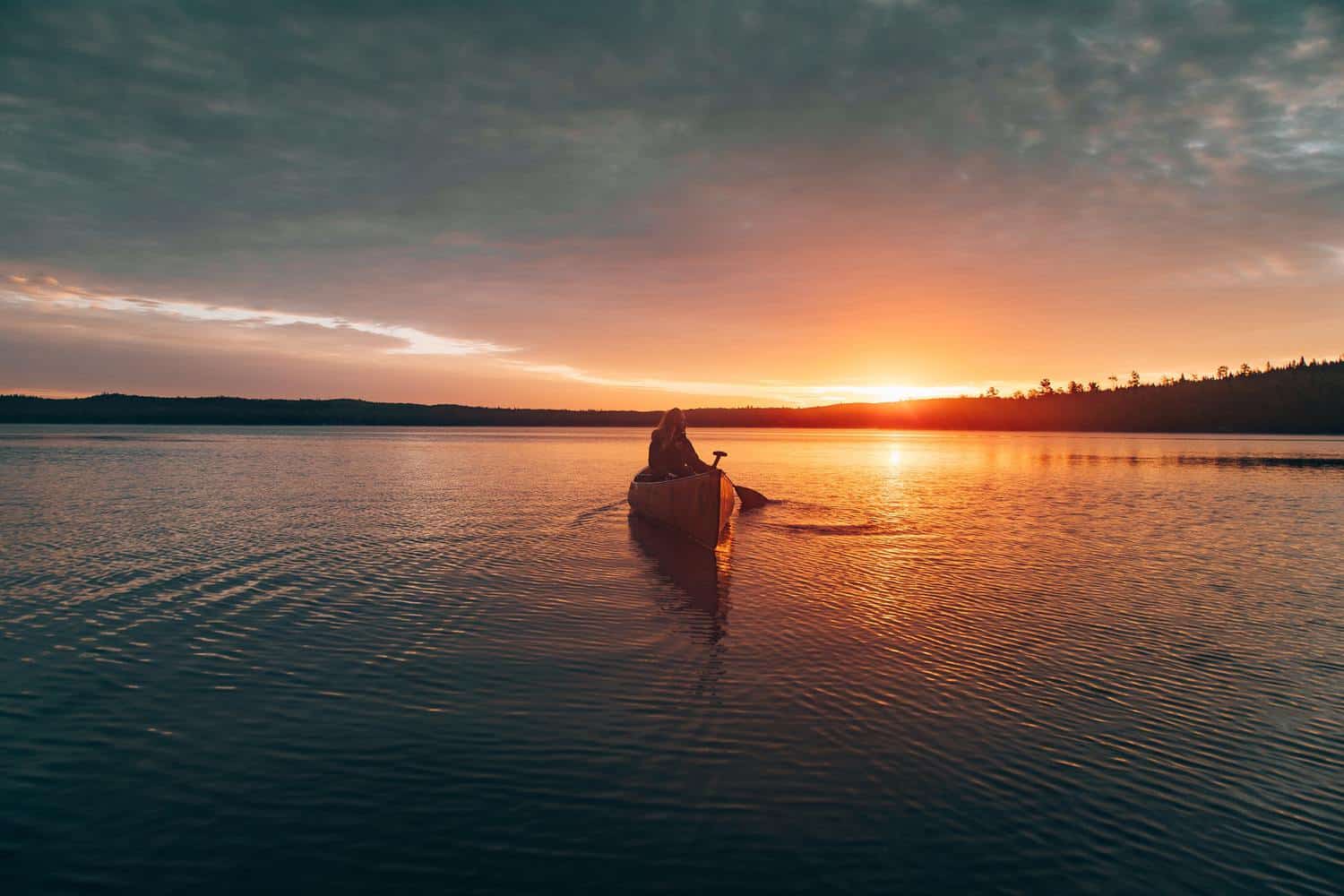
Introduction to Kayaking Strokes
Now that you’re well underway in your kayaking for beginners tour, and you know how to enter a kayak and use the paddle optimally, we can now begin to discuss the basic kayaking strokes that will help you navigate through the water. Your “how to start kayak” tutorial has officially entered the deep waters phase!
The Forward Stroke
The forward stroke is the stroke that you’ll utilize the most when you’re kayaking. Nailing your technique when it comes to this paddling motion will reap rich rewards when you hit the water. There are three major phases to executing this technique:
The Catch Phase
Here, you need to wind your torso to one side before you fully immerse your blade near the region of water next to your feet.
The Power Phase
It’s time to put some pedal to the metal and get moving by rotating your torso and allowing the blades to follow your lead. Keep an eye on the blade in the water and allow your torso to mimic the motion. Also, try pushing against the shaft of the paddle using your upper hand.
The Release Phase
Once you reach behind your hip with your hand, you should quickly but smoothly slice the blade of the paddle out of the water.
Now you can repeat the process by inserting the other end of the paddle into the water and using the same instructions as above.
The Reverse Stroke
This is yet another crucial stroke that you need to know before you hit the water, as this is the basic braking stroke that allows you to stop your forward momentum. You can also use the same stroke to start moving in the opposite direction once your kayak has come to a halt.
For this technique, you need to do the exact opposite of the forward technique. Start by immersing the blade in the water next to your hip and then push forward with your lower hand. Slice the blade out of the water when you have pushed the stroke all the way to your feet.
The Sweep Stroke
You can use the sweep stroke to maintain the direction of your kayak and also execute on turns when you need to. By using repetitions of the forward stroke on only one side of the boat, you’ll notice that the boat has started to slowly turn towards the other side.
When using the sweep stroke, use the same technique as the forward stroke, but make sure to change the path of the blade to carve a much wider arch than you would with your forward stroke.
Just remember, using sweep strokes on the left side of the boat will turn it to the right, and vice versa.
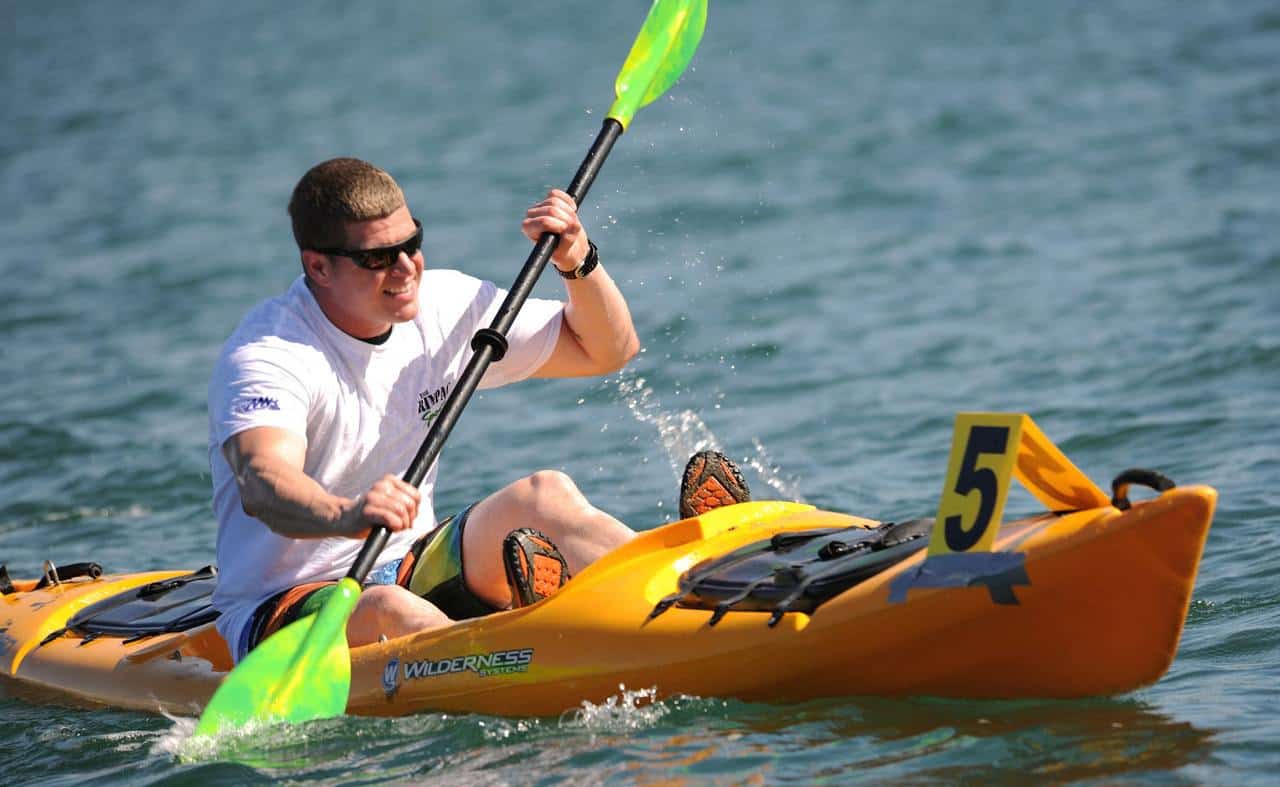
Introduction to Rudders and Skegs
Rudders and skegs are vital parts of your kayak, and it’s important to understand how to use them if they are available on your boat. They may not be vital when you’re learning how to start kayaking, but they can be priceless at the intermediate stages and are worth knowing.
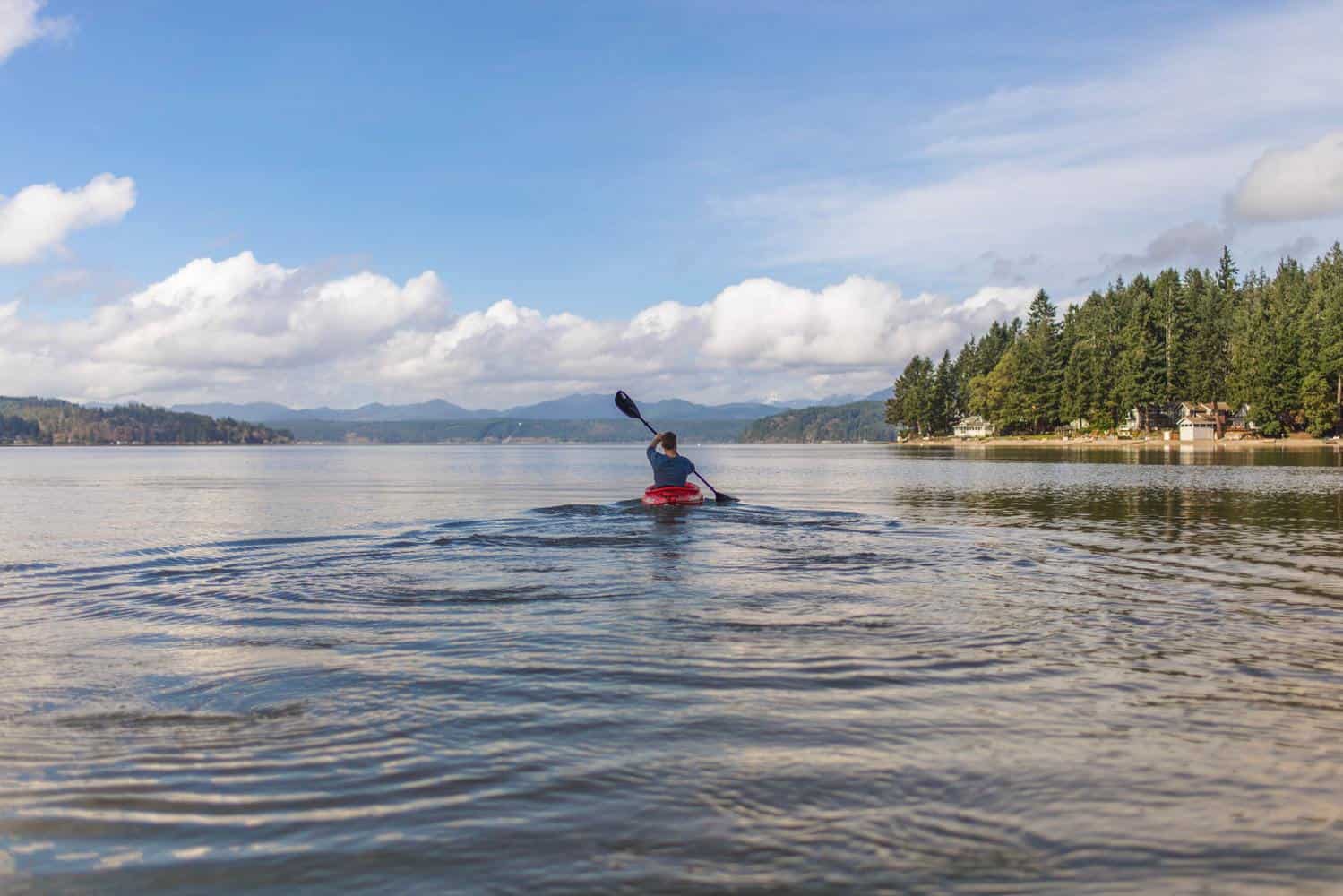
Rudders
Rudders on a boat are located at the back of the boat. You can use the rudder with the help of your foot pedal to control the direction of the boat and maintain a steady course when your kayak is moving towards the right or left.
By pushing the peg on the right, you will be able to turn your boat towards the right. Use the left pedal to turn left as well.
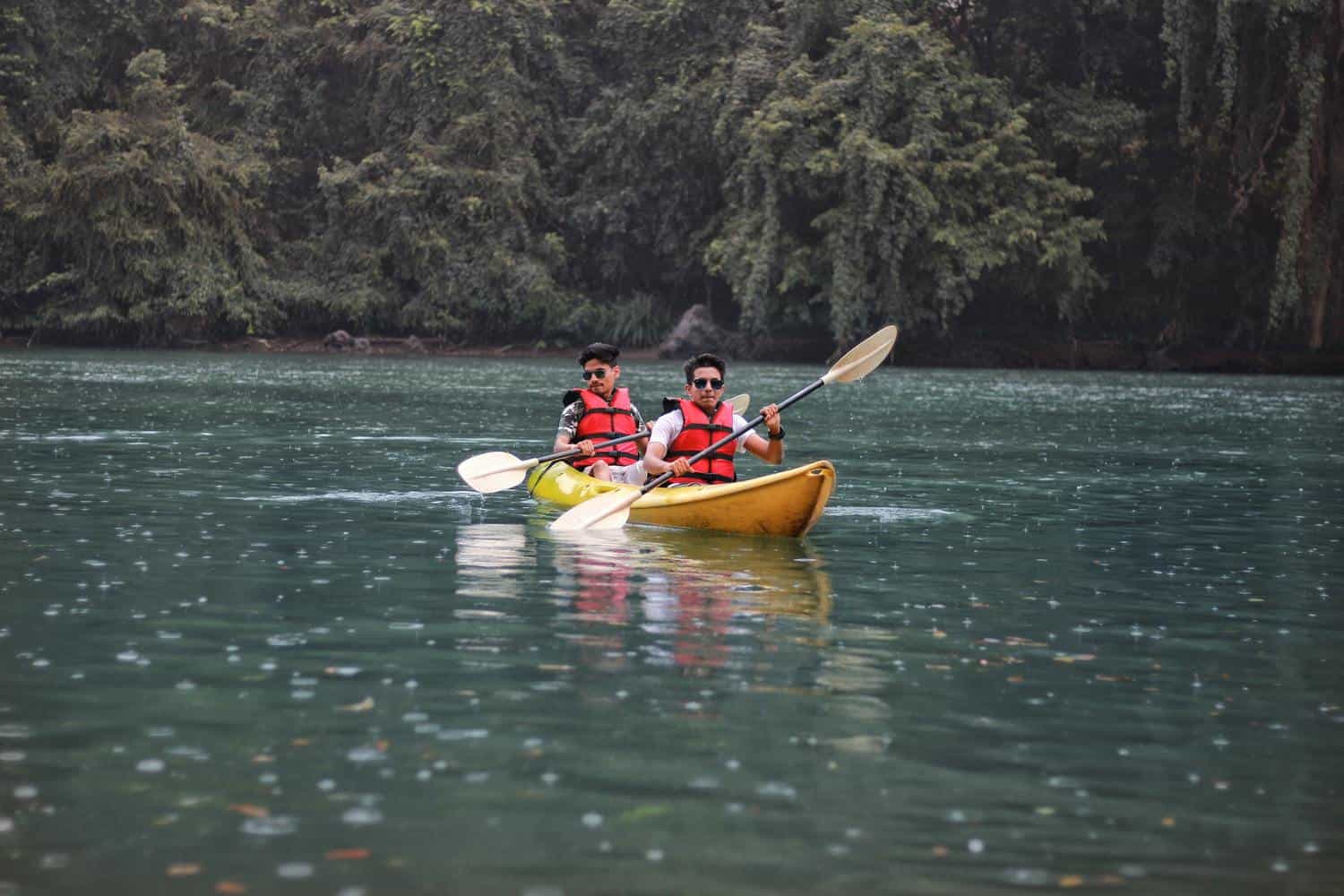
Skegs
A skeg is a priceless asset in a kayak. This is a fixed fin that drops from the bottom of your hull and ensures you can keep a straight path. You can use the skeg to help keep your kayak on course, and it’s especially useful during tough weather conditions or windy or rainy days.
A common mistake you can commit while using a skeg or rudder is when you forget to pull them up when you’re traversing through shallow waters. This can damage your boat and can be bothersome to fix later.
This is why most trainers would recommend that you don’t deploy the rudder or skeg unless you really need them. Learning to operate a kayak without these tools will help you work on your paddling techniques and allow you to operate the kayak with greater competency over time.
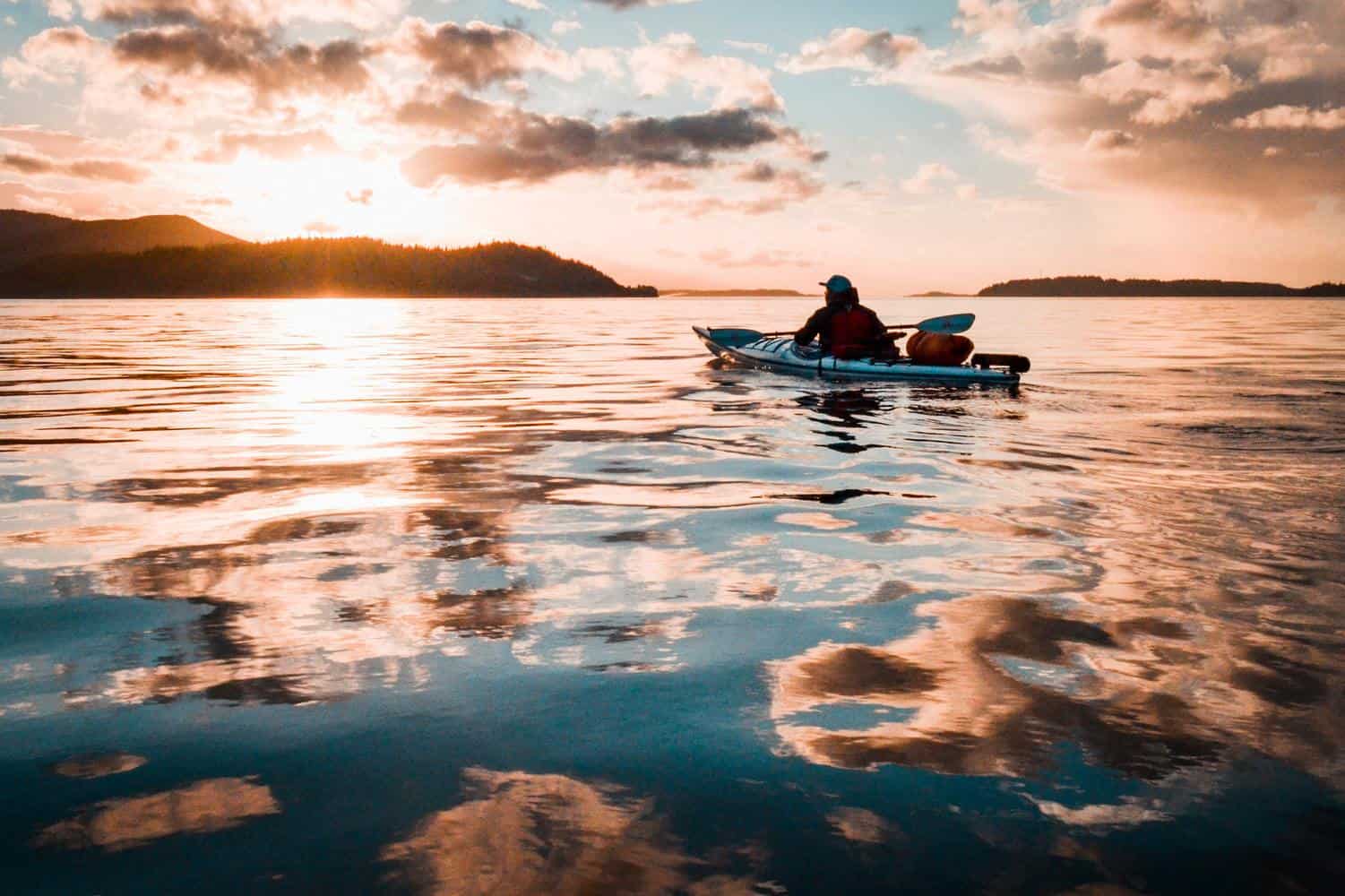
Safety Measures to Remember
The most important element to remember when you’re out learning how to start kayaking is your own personal safety. This rings especially true once you’re out there by yourself, and there’s no one around for miles. These safety tips are crucial to remember and should help you stay safe out in the water.
Kayaking With Friends
Until you’re absolutely 100 percent comfortable with your techniques and operating the kayak, I wouldn’t recommend that you go out kayaking by yourself. If you don’t find it alluring to resort to a trainer when you want to kayak, you can always ask a friend to tag along for safety reasons.
Just make sure to carry along a friend who’s responsible and will respect the water. A “pact” always helps in these times, where you explicitly state the guidelines to be followed when you’re in the water. This involves always staying within eye line and earshot of one another.
Know Your Limits
This pointer is invaluable for a wide set of reasons. You should know your limits when you’re out kayaking, both in terms of your physicality and your mental fortitude. Make sure to define and stay within these limits for your own safety. This is crucial to remember when you’re considering rules of kayaking for beginners.
Don’t try to venture too far away from the shore, and don’t push yourself beyond the point of exhaustion. Kayaking is largely a solo activity, and you need to be able to rely on your own wits and common sense to have fun and stay safe during the experience.
Information Helps
Having a lot of information before you step into the water can be useful for various reasons when you’re tackling how to start kayaking.
Understanding what weather conditions you can expect across the day, knowing the kind of sea life you’re likely to encounter, and always having a sense of direction to be able to get back to shore are just some of the pieces of information you need to attain while kayaking.
You can make many informed decisions when you’re armed with such information. For example, if you know that the temperature of the water is likely to hit below 60 degrees Fahrenheit, you can carry a wetsuit to keep yourself warm in chilly waters.
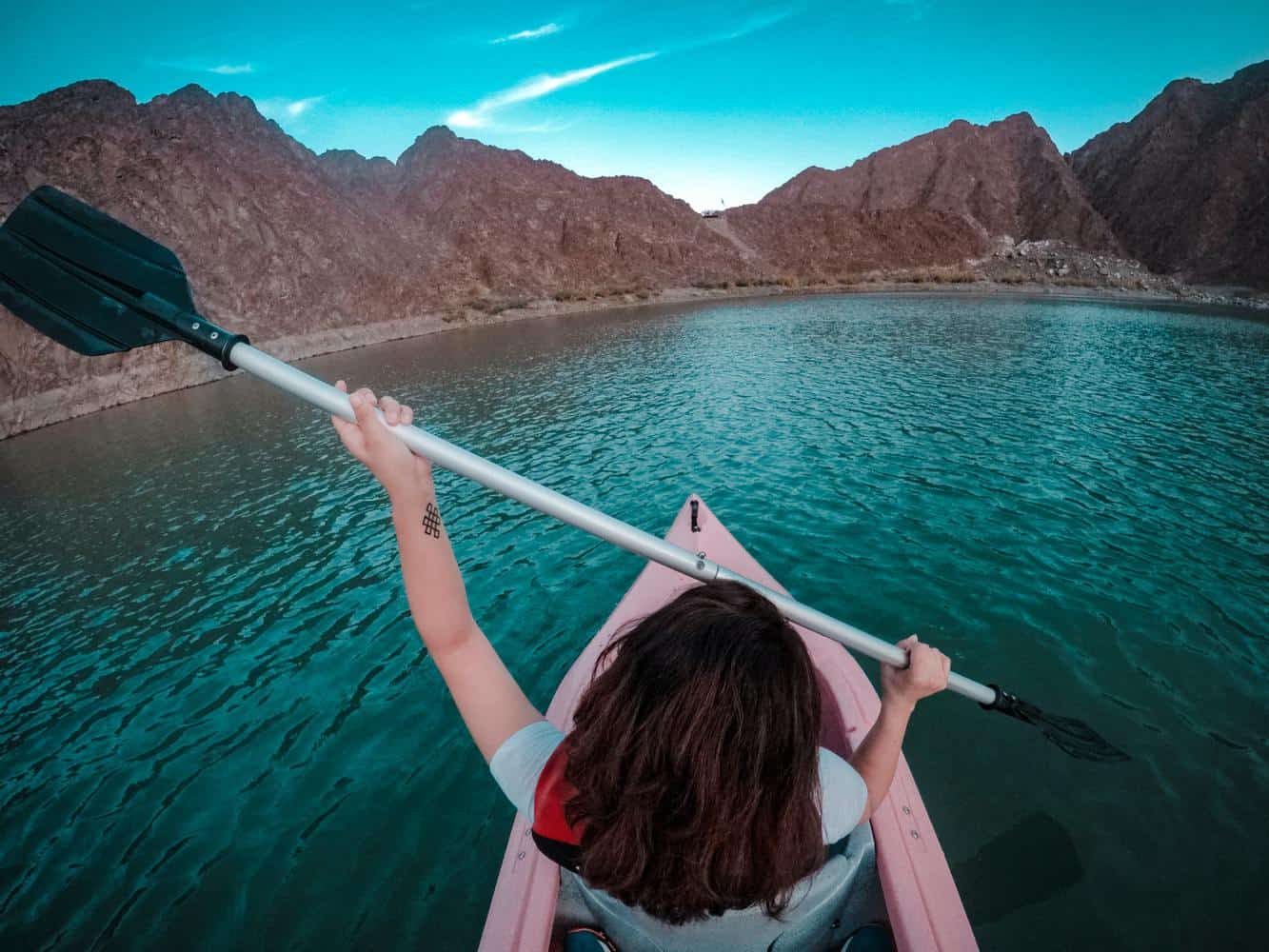
Personal Floatation Device
No matter how great a swimmer you think you are, there is no predicting the ferocity of tides in the sea. Regardless of whatever body of water you’re venturing into, though, it’s absolutely crucial to carry a high-quality personal floatation device.
Apart from ensuring the quality of the PFD, you should also make sure that it fits you well. It should be tight, all the while being loose enough to ensure that you can breathe with ease.
For whatever reason, if you need to remove your PFD, make sure to paddle back to shore. Never remove your PFD in the kayak when you’re out in the water, especially when you’re just learning how to start kayaking.
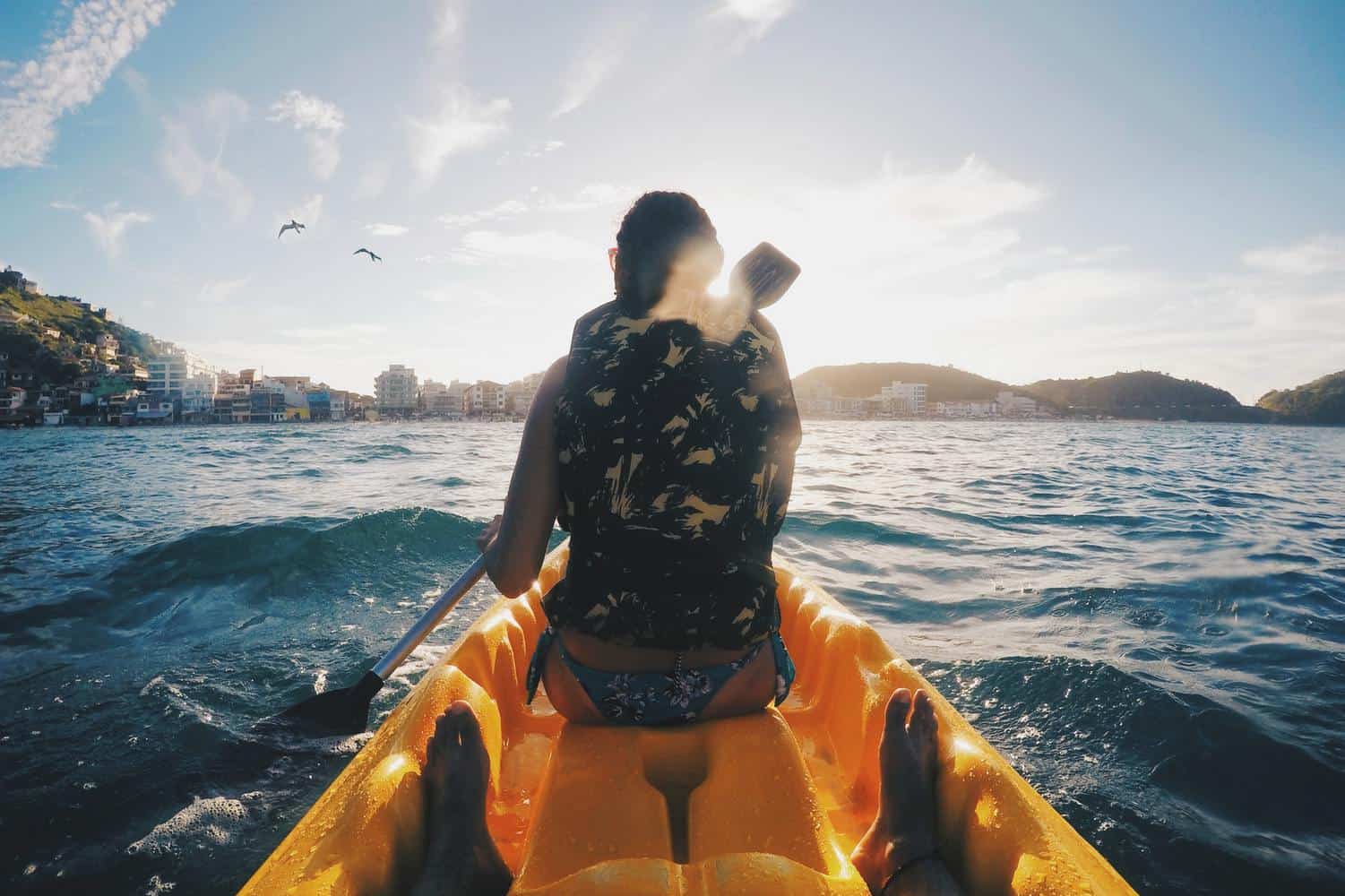
Using a Spray Skirt
Spray skirts are extremely useful in the water, but you need to be able to use one properly if you intend to put it to good use. Never wear a spray skirt unless you’re confident that you’ll be able to take it off easily and execute on a wet exit.
That Little Whistle
A whistle may seem like a small and insignificant part of your kayaking experience, but it’s just as important as any other piece of equipment you intend to carry out into the water with you.
If you end up getting stranded in open waters, the only real way of getting the attention of passing vessels is with a whistle. This crucial little “toy” can sometimes be the difference between a jolly day and a horrid one.

The Water, She Calls
Kayaking may seem like an intimidating activity to take on if you’re new to swimming or venturing into the open waters. Trust me, though, there’s nothing quite as liberating once you’ve taken to kayaking with an open mind.
As a beginner, however, caution is key! Respect the water and respect your kayak, because that’s the only way to truly stay safe out there. Once you’ve gotten comfortable with kayaking, though, it’s nothing but pure fun.
Enjoy your time out there. When the water calls out to you, you now have a trusty kayak to help you answer the call with aplomb.

![10 Best Wellington Boots For Kids: <br>Definitive Guide [currentyear] 10 Best Wellington Boots For Kids: Definitive Guide 2024](https://topnotchoutdoor.com/wp-content/uploads/2020/12/Best-Wellington-Boots-for-Kids-FI-768x480.jpg)
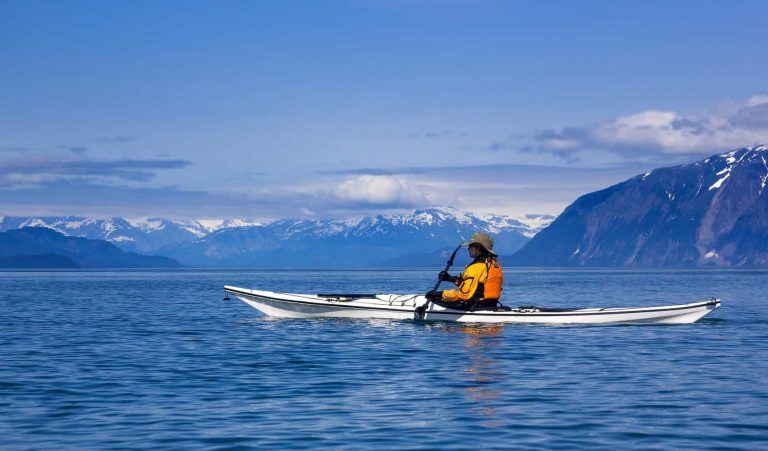
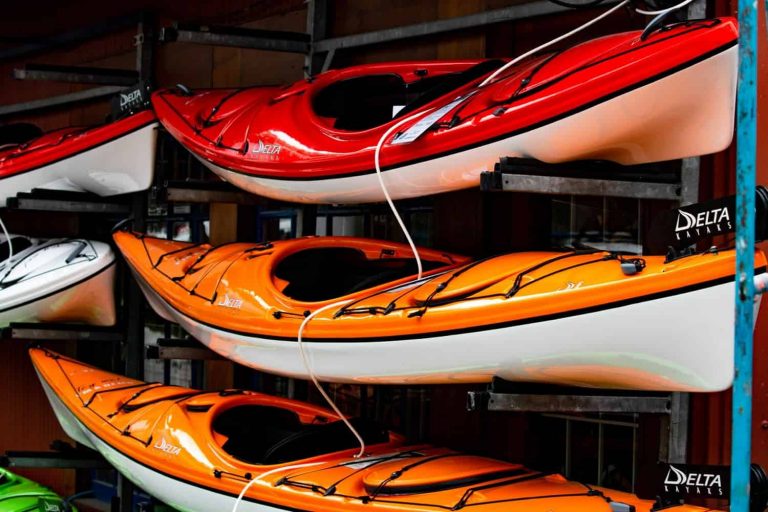
![50 Best Places To Go Camping In The USA [currentyear] 50 Best Places To Go Camping In The USA 2024](https://topnotchoutdoor.com/wp-content/uploads/2020/07/Best-Places-For-A-Camping-FI-768x480.jpg)
